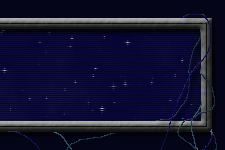|
Symbol
(# on planet
cannot exceed its PPs)
|
General
Information
|
What
does it affect?
|
Employment
|
|
i
Bioharvesting
|
Generates
bioharvest units that are generally consumed as food (at
the rate of 1 per Population Point), but can also be used
in manufacturing.
The economic
value depends on whether a unit is consumed as food, raw materials,
or sold as surplus. In addition, rare byproducts can generate
a lot of money.
|
Regional
Fertility, Dominant Terrain, Species, plus all the usual modifiers*
determine how much is produced.
Biodiversity,
Ecosystem, and Supply & Demand determine the value of
each unit.
|
A Bioharvesting
DEA employs 1/2 Population Point. Each building that increases
its capacity employs another 1/2 Population Point.
|
|
@
Mining
|
Generates
mineral units that are generally consumed as raw materials
in manufacturing. Geodics eat mineral units instead of bioharvest
units, while Cybernetiks eat ½ unit of each.
The economic
value depends on whether a unit is consumed as food, raw materials,
or sold as surplus. In addition, rare byproducts can generate
a lot of money.
|
Mineral
Richness, Terrain Type, plus all the usual modifiers* determine
how much is produced.
Mineral
Richness and Terrain Type determine the value of each unit.
|
A Mining
DEA employs 0 Population Points. Each building that increases
its capacity employs 1/4 Population Point.
|
|
F
Manufacturing
|
Manufacturing
generates output by consuming mineral and/or bioharvest
units. Output generates money and cement. Cement determines
how efficiently a planet can convert money into production
points. Production points are spent to build things on a planet.
|
The ratio
of consumption to output is based upon technology. All the
usual modifiers determine how much output is produced.*
Craftsmanship
determines the value of each unit of output.
|
A Manufacturing
DEA employs 1 Population Point. Each building that increases
its capacity employs another 3/4 Population Point.
|
|
Â
Research
|
Research
generates test tubes. Test tubes determine how efficiently
a planet or civilization can convert money into research points.
Research points are spent on fundamental research and project
development.
|
All the
usual modifiers determine how many test tubes are produced.*
|
A Research
DEA employs 0 Population Points. Each building that increases
its capacity employs 1/4 Population Point.
|
|
˜
Government/
Social
|
Government/Social
generates economic benefits in the forms of incentives
(improving the effectiveness of infrastructure) and investments
(increase after tax revenue), and civic benefits in
the form of increasing the number of Draft Pool points generated
locally and quelling unrest.
|
The higher
the Seat of Government on the planet a Government/Social DEA
is located on, the lower the value of its affects but the
greater their outreach. Government type affects unrest quelling.
Otherwise, all the usual modifiers apply.*
|
A Government/Social
DEA employs 1 Population Point. Each building that increases
its capacity employs another 3/8 Population Point.
|
|
&
Military
|
Military
generates "presence points." Presence points expand the
number of military bases and orbitals that can exist at a
planet, increases the number of Draft Pool points generated
locally, and quells unrest.
|
Each Military
DEA’s capabilities in all three areas is increased by the
sheer quantity of Military presence points on that planet
plus all the usual modifiers.* Government type affects unrest.
Both the Draft Pool and unrest effects suffer from diminishing
returns, however, with multiple Military DEAs’ overlapping
influence.
|
A Military
DEA employs 1/2 Population Point. Each building that increases
its capacity employs another 1/2 Population Point.
|
|
I
Recreation/
Cultural
|
Recreation/Cultural
generates "influence points" that increase the Social
State, plus money (from tourism), and reduces unrest.
|
Tourism
is affected by its civilization’s Military-Economic setting,
the distance between stars along Jump Lanes, and all the usual
modifiers.*
Unrest
reduction is affected by the number of Rec. DEAs affecting
that region plus the usual modifiers.
Social
State is affected ratio of total Recreation/Cultural influence
points to the population size of that civilization, plus all
the usual modifiers.*
|
A Recreation/Cultural
DEA employs 1/2 Population Point. Each building that increases
its capacity employs another 1/2 Population Point.
|
|
è
Space
Port
|
A Space
Port cannot be built in a region with less than 2 Population
Points. Also, increasing its capacity requires additional
pairs of Population Points in that region.
A Space
Port generates money – potentially lots of money –
from commuter (same planet), local (same system), and interstellar
(inter-system) trade.
|
Trade
volume is affected by population size, population affluence
(%age untaxed), and Space Port efficiency.
Space
Port efficiency is affected by its civilization’s Military-Economic
setting, the distance between stars along Jump Lanes, the
current Freighter Speed, and all the usual modifiers.*
|
A Space
Port DEA employs 0 Population Points. Each building that increases
its capacity employs 1/4 Population Point.
|
|
€
Population Points
|
Additionally,
a Population Point makes cement (3 per turn) and test tubes
(1 per turn). With the appropriate Race Pick, they can also
make bioharvest and/or mineral units (1/4 each per turn).
|
The maximum
population on a planet is affected by the planet size, its
Habitability Ring location for that species, and its Ecosystem
Density.
Population
growth rate is affected by Regional Fertility and access to
food.
|
Number
unemployed equals planetary population minus direct employment
(see above). The remainder is multiplied by the total tax
burden percentage on that planet to get the number of unemployed.
|
| |
|
* "All
the usual modifiers" include: buildings, achievements, infrastructure,
Leaders, government type, specials, pollution, gravity, and
morale.
|
|



